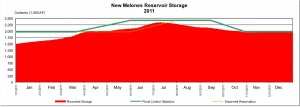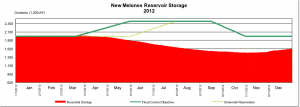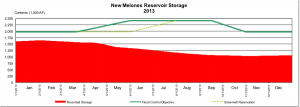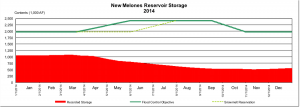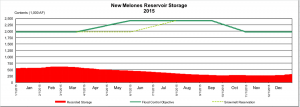Declining trout population on the Stanislaus River
more evidence of flawed water management policies
Here is a sad fact: There are fewer rainbow trout in the Stanislaus River now than at any point since the federal government required higher water flows seven years ago. It is a shameful and avoidable situation caused not by the ongoing California drought, but by flawed water management policies intended to benefit endangered fish that are based on nothing more than assumptions and guesswork.
In 2009, the National Marine Fisheries Service (NMFS) issued a Biological Opinion. It mandated that huge releases of water pursuant to the Endangered Species Act (ESA) be sent down the river annually to protect and enhance rainbow trout and steelhead (O. mykiss). As our districts pointed out then, there was zero science behind the misguided decision to substantially increase Stanislaus River flows.
“Federal officials naively believed that ‘more water equals more fish.’ The districts warned, and NMFS agreed, that the severity and occurrence of dry-year conditions only increase under the ESA releases, and that more dry years would hurt the O. mykiss fishery,” said Peter Rietkerk, general manager of the South San Joaquin Irrigation District.
An alarming report released today by FISHBIO offers stark evidence that by itself flushing billions of gallons of water to the ocean each year does not help rainbow trout and steelhead. The report offers compelling and clear data that the temperature of the water in the river plays a pivotal role in trout reproduction and overall population. Unlike the Biological Opinion, the report is based on scientific field research by FISHBIO staff and population surveys they conducted in the river. It directly ties a sharp drop in fish population in 2015 to a dramatic spike in river temperatures – a disappointing outcome that the districts believe was avoidable and directly related to the flawed science of the Biological Opinion.
For young trout to survive, the temperature of the water should be 60 degrees or colder at release from Goodwin Dam east of Knights Ferry. The Stanislaus River got as warm as 69 degrees in 2015.
“Last summer, there was not enough cold water from deep in New Melones Reservoir to send down the river and lower the temperature because it had been released earlier,” said Steve Knell, general manager of the Oakdale Irrigation District. “Sadly, there is a strong possibly that mistake will continue to be repeated if the Biological Opinion is not changed.”
New Melones is managed by the federal Bureau of Reclamation. OID and SSJID have rights to water in the reservoir. Before the Biological Opinion was released, the districts consistently said the science at that time pointed to the possibility of more dry years than wet ones. The National Marine Fisheries Service agreed, but did not modify its flow regimes. Now that scenario has come to pass. Yet long-term water storage behind New Melones – which provides affordable surface irrigation supplies to grow food, generates zero-carbon hydroelectric power and recreational opportunities in addition to ensuring a cold-water reserve to decrease river temperatures – has taken a back seat to concerns for “more flow.” Meanwhile, storage at New Melones dropped every year from 2011 to 2015.
Insanity is said to mean doing the same thing over and over and expecting different results. So add another sad fact to this discussion: the State Water Resources Control Board is about to unleash another flawed paradigm in its revised Water Quality Control Plan for the Bay Delta. It’s called the 40% Unimpaired Flow Standard. Strangely, its objective is to take even more water from three Central Valley rivers and send it out to the ocean in the “hopes” of producing more fish.
The districts continue to challenge the assumptions used in the Biological Opinion and the upcoming State Water Quality Control Plan. The empirical data gathered by FISHBIO should be the foundation of new discussions about how to best manage water on the Stanislaus River, and to protect and enhance rainbow trout and steelhead. SSJID and OID are eager to participate in those conversations in an effort to craft sensible and balanced water policies. But in order to do that the districts have to be heard, and to date the state and feds have failed to listen. The current flow standards are destroying the fisheries that they are intending to protect and doing so at the expense of Central Valley agribusiness and urban interests, who also depend upon a healthy and sustainable river. Regulators continue to demand “more flow.” With these results, “more flow” makes no sense.
About Us: The South San Joaquin Irrigation District was established in 1909 and is located in Manteca. It provides agricultural irrigation water to about 55,000 acres in Escalon, Ripon and Manteca. In 2005, the district expanded into providing domestic water service to selected cities within its territory. The Oakdale Irrigation District was created in 1909 and provides agricultural water to about 62,000 acres in northeastern Stanislaus County and southeastern San Joaquin County.
Save the Stan is a public education effort by SSJID and OID to inform Californians about the threat posed by increased flows on the Stanislaus River. For more information, go to www.savethestan.org or our Facebook page.

